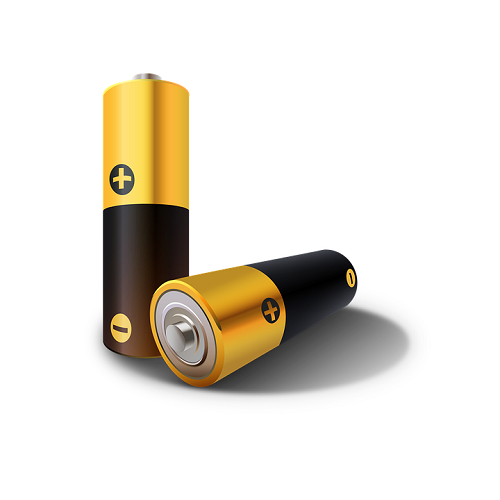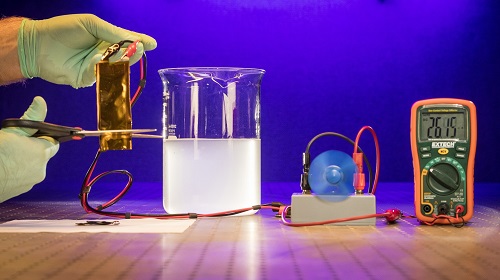By Richard Quinnell, editor-in-chief
Instances of batteries catching fire or even exploding have highlighted a serious design challenge facing creators of mobile devices, electric vehicles, drones, and the like. Battery technology falls far short of the ideal that developers desire. A great deal of research has been and is being done toward creating the ideal battery, but breakthroughs remain elusive. One reason for the situation is that there are many different, and conflicting, goals to optimize.
One of the key characteristics that developers seek is a high energy density. But even this basic quantity remains a bit elusive. Depending on the application, the term may refer to total energy in terms of deliverable watt hours per unit volume, per unit weight, or both. Lead-acid batteries, for instance, can store a lot of energy but are relatively heavy, which creates a problem when using them to power electric vehicles due to the need to carry all of that weight around. The ideal battery, of course, would be both small and lightweight while offering substantial reserves of energy.

Image source: Pixabay.
A second key question is if the battery can be recharged. Not all battery chemistry is a reversible reaction. Alkaline and silver-oxide batteries, for instance, cannot be reliably recharged, whereas lithium-ion and lead-acid batteries can be. The ability to recharge a battery is highly desirable in many applications, though, as it can eliminate the need to remove and replace batteries that become exhausted.
There are other desirable characteristics beyond energy density to consider in a battery design as well.
What is the battery’s terminal voltage at full charge, and how does it change as it discharges? That can make a difference in how many battery cells must be connected in series or whether regulators are needed to provide an appropriate voltage to run electronics reliably throughout the battery’s discharge curve.
How much current can the battery reliably source? Pull energy out of a battery too quickly and it heats up due to its internal resistance, which both wastes capacity and creates a fire or explosion hazard. But some designs, such as wireless IoT devices that communicate in bursts, need only a trickle of current sometimes and a surge of current at other times.
The flip side of that question is how quickly a battery can be recharged. This only applies to batteries with reversible chemistry, of course, but is essentially the same heating problem as drawing current out. Too quick a recharge can permanently damage the battery. A related recharge question is how many times the chemistry can be reliably reversed. Rechargeable batteries will “wear out,” storing less and less energy over time.
Then there are the secondary characteristics to consider. Are poisonous, corrosive, reactive, or rare materials involved? Does the battery have a liquid component such that there is a leakage concern? What is the battery’s self-discharge rate? How do any of its primary specifications (voltage, capacity) change with temperature? Will it even operate at all at high or low temperature extremes? Can the battery be fabricated to occupy an odd shape or to be flexible?

This abuse-tolerant battery will still function even when cut in half. Image source: U of MD.
There is also the question of whether or not a battery is the right approach in the first place. Much research is going into the creation of fuel cells as an alternative to batteries. These are chemical reactions that produce electricity while irreversibly consuming their “fuels.” The classic example is the hydrogen fuel cell used in manned spacecraft. It combines hydrogen and oxygen to produce water as the byproduct of generating electrical current.
This multitude of questions and considerations has driven battery developers in as many different research directions, as the below survey of recent battery articles from across the AspenCore network shows. There are promising results for batteries that optimize for one or more of these characteristics. As of yet, however, no one has found a result that addresses them all. Depending on your application’s need, then, you may or may not see hope in these development efforts. But the search will undoubtedly continue for the ideal battery, and in the meantime, there are some techniques offered in the articles below that you can apply to mitigate drawbacks in current battery technology.
World’s first rechargeable proton battery may be an eco-friendly alternative to Li-ion — Researchers believe that the proton battery has the potential to displace Li-ion batteries.
Advanced battery packages empower next-generation systems — Engineers have more and more choices when designing and specifying their battery packs.
How saltwater batteries can be used for safe, clean energy storage — Saltwater batteries hold powerful advantages in applications in which size and weight are less important factors.
Will fuel cells replace batteries in cost efficiency and portable applications? — Fuel-cell maker MyFC predicts that fuel cells will surpass batteries in energy density and cost efficiency in a few years.
Energy-storage options: abundant alternatives and tricky tradeoffs — A look at batteries for grid-level energy storage.
Comparing common battery types for mobile devices — A look at lithium-ion, lithium-polymer, nickel-cadmium, nickel-metal hydride, and other battery technologies.
Researchers Print Stretchable Battery to Light Wearables — Researchers recently demonstrated a newly formulated zinc-silver-oxide rechargeable battery technology that can be printed on fabric.
Scientists discover new battery material for super-fast charging and stable operation — Researchers are developing anodes made from lithium titanate hydrate, a fast-charging water-bearing compound.
Solid-State Batteries Aim to Top Li-ion — Solid-state batteries could allow individual chips to be self-powered.
Startup aims to bring sodium-ion batteries to mass production by 2020 — French company Tiamat is dedicated to the development and production of alternatives to lithium-ion batteries.
New Li-ion battery design continues working after it’s cut in half or dunked in seawater — Research results in an abuse-tolerant battery design.
Keeping it safe: the lithium-ion battery — A look at the methods used to help make Li-ion batteries safer.
Nanodiamonds Found to Prevent Lithium Battery Fires — Scientists think they have a solution to what caused Note 7 battery fires.
Testing IoT Devices: Battery Life — A TechOnLine webinar from Rhode & Schwarz on effective ways to test and analyze battery life consumption by IoT devices.
Advertisement
Learn more about Electronic Products Magazine





